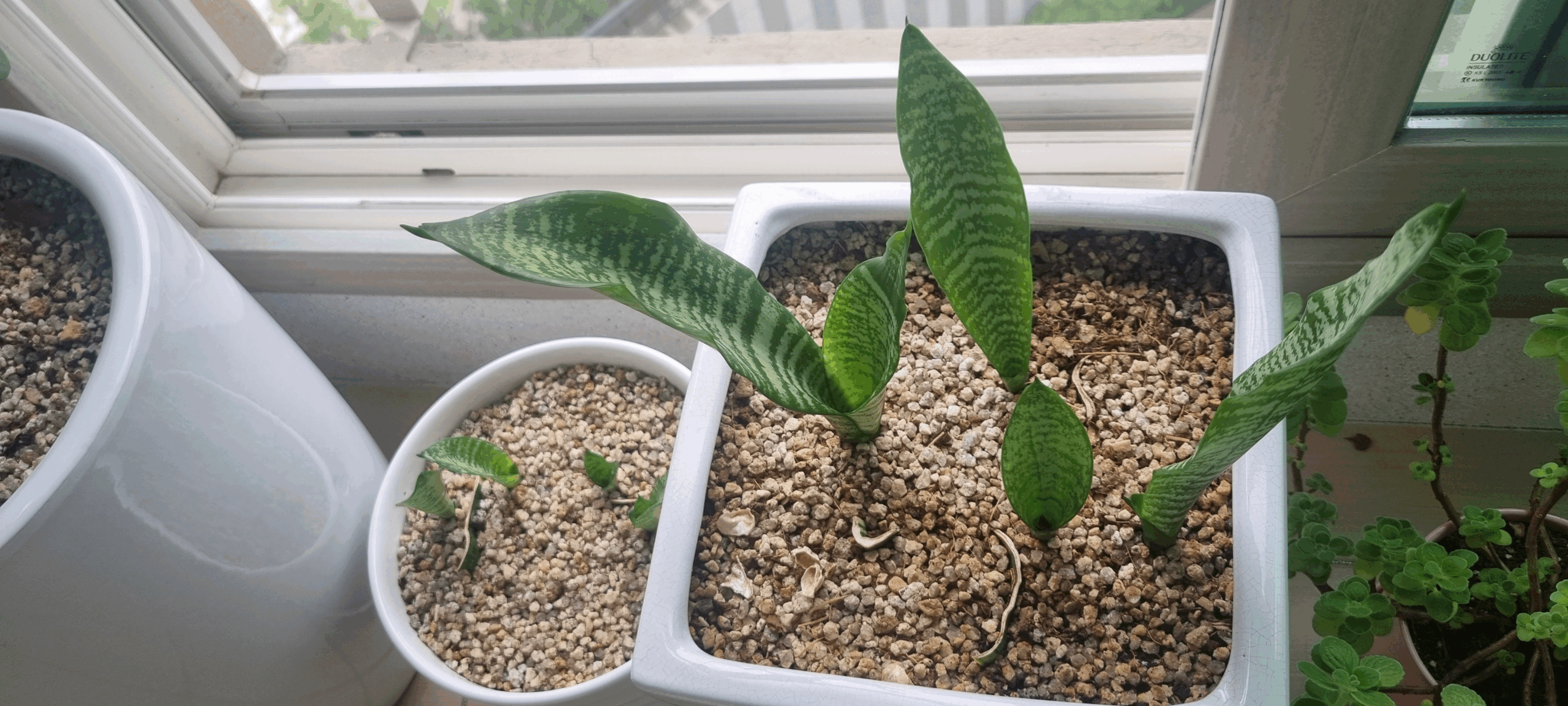
How to Propagate Sansevieria in Water (Hydroponic Method)
Sansevieria, a popular houseplant, is known for its excellent air-purifying properties and easy maintenance. It even releases oxygen at night, making it perfect for bedrooms and living rooms.
In this guide, we will show beginners how to easily propagate Sansevieria using the hydroponic (water) method, step by step.
1. Materials Needed
- Healthy Sansevieria leaves
- Scissors or a knife
- Glass cup or jar
- Clean water
TIP: Using a transparent glass allows you to observe root growth, which makes propagation more engaging.
2. Cutting the Leaves
- Choose healthy, sturdy leaves.
- Cut the leaf into pieces about 5–10 cm (2–4 inches) long.
- Mark the top and bottom of the cut to avoid confusion later.

TIP: Avoid leaves that are damaged or unhealthy, as they may rot in water.
3. Let the Cut Ends Dry
- Place the cut leaves in a shaded area for 1–2 days to let the cut ends dry.
- If the cut end is not dried before placing it in water, it may rot.
4. Place in Water
- Fill a glass or jar with clean water.
- Submerge 2–3 cm of the cut end in the water, keeping the rest of the leaf above the water.

TIP: Make sure only the cut end is submerged to prevent the leaf from rotting.
5. Care and Maintenance
- Place the glass in a bright area without direct sunlight.
- Replace the water once a week with fresh clean water.
6. Observe Root Growth
- After about 3–6 weeks, roots will begin to grow from the cut end, and new shoots may appear.
- Once the roots are well-developed, you can transfer the plant to soil.

TIP: Watching the roots grow in a transparent cup adds an enjoyable and educational aspect to propagation.
7. Transplanting to Soil
- Once the baby Sansevieria has grown enough roots, plant it in a pot with soil.
- Continue caring for it as a regular Sansevieria plant.

Additional Notes
- Sansevieria can also be propagated using leaf cuttings or division.
- Hydroponic propagation allows you to see the roots develop, and transplanting into soil afterward ensures healthier growth.
This method is simple, fun, and perfect for beginners who want to propagate Sansevieria at home.
View the Korean version



